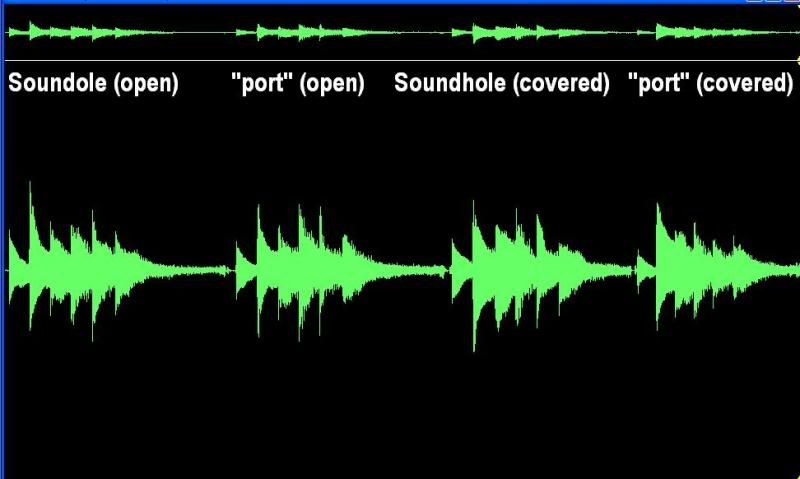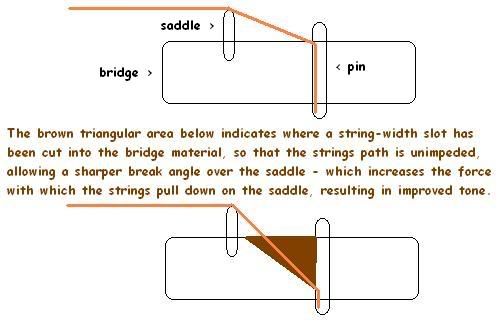|
|
Post by D2o on May 31, 2009 8:44:16 GMT -5
What would it sound like if you covered to top original sound hole and just used the new cut ones? Just curious. Good question. I just fashioned a fetching cardboard soundhole cover and did a before and after recording. The effect is a lot less than I would have guessed. The effect was vitually nil on the volume (and it did not cause more sound to come out of the "port") and there was only a very slight reduction in tone. This project may still be a failure, but now it's a failure on multiple levels!    D2o  |
|
|
|
Post by D2o on Nov 17, 2009 14:57:21 GMT -5
|
|
|
|
Post by RandomHero on Jan 12, 2010 22:04:22 GMT -5
Just read through this thread for the first time, very interesting experiment D2o! I like the look of the finished product, actually... it's the "unexpected" appeal that turns me on. =)
Since the tone of an acoustic is comprised of generally difficult things to change, like the material it's made of, I don't know if you can really get "better" tone. You can probably come up with mechanical fixes for things like volume and sustain, but I would think when it comes to a given acoustic that the tone is set in stone! (hahahaha)
I read someone did "string ramps." I don't know what that means, but if I'm thinking logically, you're making the pin side of the bridge more like a nut... that is to say the strings don't contact the bridge at just one point, but along a profiled groove which terminates on a tangent with the pins.
I think this might increase sustain and projection, because the string is "anchored" by a nut-like groove, instead of just resting on the top of a ridge. Also, more of your string is in contact with the bridge, which translates to better transmission of vibration to the soundboard.
As far as bridge material, we need something incredibly hard, but also incredibly light. Basically, increase the efficiency of vibration carried to the top, but try not to increase the weight of the bridge... seeing as how it's right in the center of the soundboard.
(EDITed to remove a member's non-screen name.)
|
|
|
|
Post by D2o on Jan 13, 2010 13:23:19 GMT -5
I read someone did "string ramps." I don't know what that means, but if I'm thinking logically, you're making the pin side of the bridge more like a nut... that is to say the strings don't contact the bridge at just one point, but along a profiled groove which terminates on a tangent with the pins. I think this might increase sustain and projection, because the string is "anchored" by a nut-like groove, instead of just resting on the top of a ridge. Also, more of your string is in contact with the bridge, which translates to better transmission of vibration to the soundboard. Thanks, RH - I'm glad you liked it. This is more or less what I was going for with the string ramps.  Here is a picture of string ramps that I found on the net.  By the way, I dare not do the string ramps thing on my current acoustic because I've already hacked away enough of the bridge in converting from a lefty to a righty - you can see that topic here. Cheers, D2o P.S. Thanks. sumgai. |
|